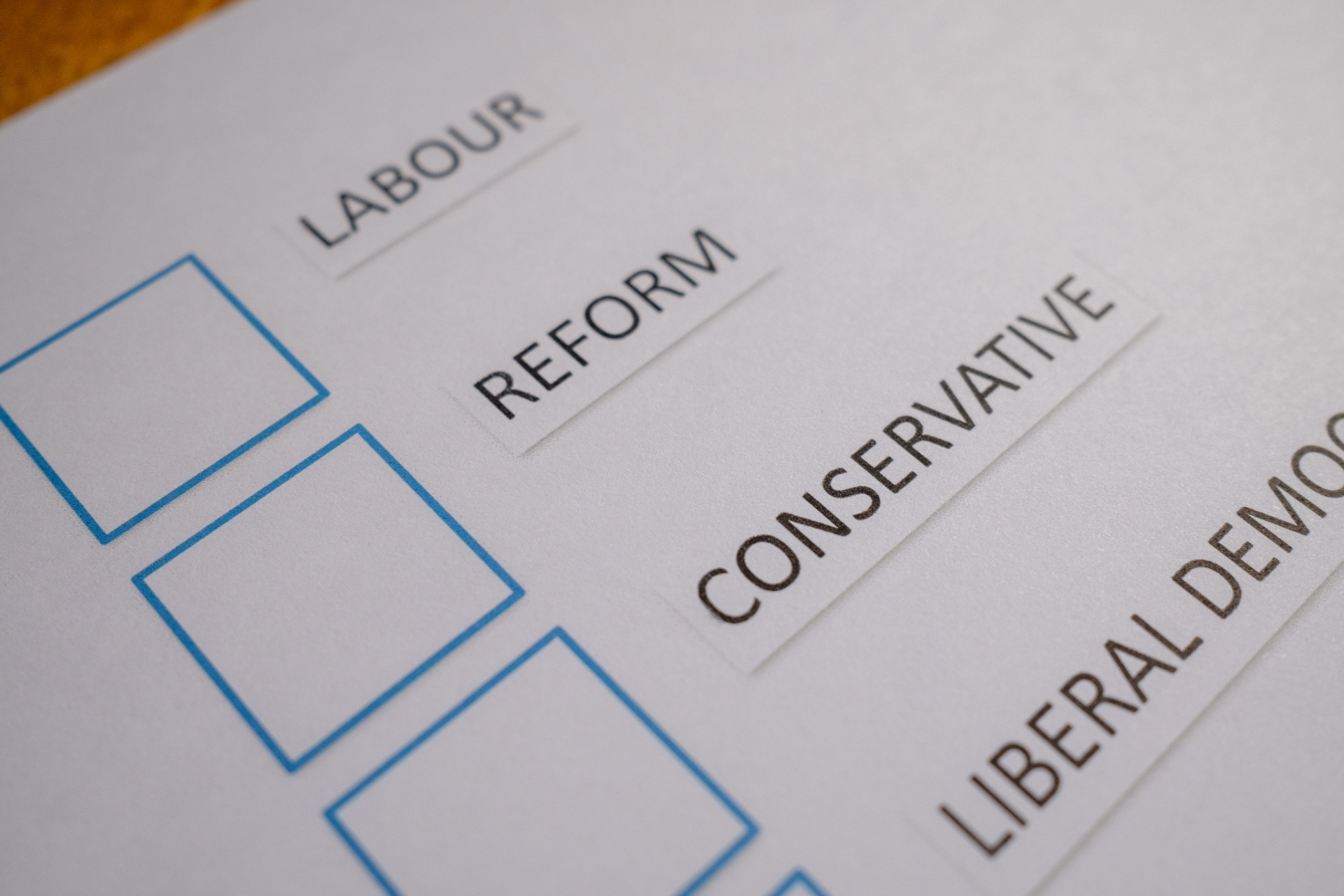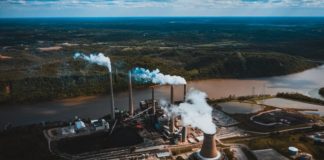The Energy Advice Hub is a non-biased news source and reports from a facts-only perspective. We do not instil our own political views within any articles.
As the election draws ever nearer and all the party manifestos are released, we’re breaking down the key developments within the energy sector. We have chosen to cover the pledges of the five parties leading in the polls, according to the BBC’s poll tracker. This article will continue to be updated as more information is released.
Jump to:
Labour: Great British Energy, National Wealth Fund, continued oil support
Labour’s Keir Starmer has said he’s going to bring an end to “desperate era of gestures and gimmicks” brought on by the conservatives. But will his party actually walk the walk when it comes to implementing change?
After pulling apart Labour’s manifesto, we’ve seen that it has a clear-cut plan towards net zero, all the way down to a fiscal report to clarify where funding is coming from. However, it has also made it clear that oil and gas are to remain a key player in the UK’s energy mix for ‘decades to come’.
Here’s an in-depth look at some of their key objectives.
Investment in clean energy
One of the frameworks Labour proposes to bring in is the National Wealth Fund, which will invest in jobs that have potential to help rebuild Britain’s industrial strength. New jobs will develop from investments alongside the private sector in gigafactories, clean steal plants, renewable-ready ports, green hydrogen, and energy storage. This includes:
- £1.8 billion to upgrade ports and build supply chains across the UK
- £1.5 billion to new gigafactories for the automotive industry
- £2.5 billion to rebuild the steel industry
- £1 billion to accelerate carbon capture deployment
- £500 million to support green hydrogen manufacturing
- British Jobs Bonus: Up to £500 million per year from 2026 to reward clean energy developers.
Further developing the road map to net zero
Coupled to work hand-in-hand with the National Wealth Fund is the newly proposed Green Prosperity Plan, the capstone piece on energy for Labour. Via this roadmap, Labour plans to ‘invest in the industries of the future’ and create 650,000 green jobs across the country by 2030.
A key segment of the Green Prosperity Plan is forming Great British Energy (GBE), which would make energy more accessible by forming a publicly-owned clean power company. This would be funded by windfall tax on oil and gas companies. With the aim of cutting the average consumer’s energy bill by £300 and securing the UK’s energy supply, GBE will partner with industry and trade unions to deliver clean power by co-investing in leading technologies to deploy in local energy production. GBE would be headquartered in Scotland, an area of the UK becoming increasingly known for its strong green and clean energy supplies.
The manifesto also, however, makes clear that oil and gas production will not be going anywhere anytime soon. It says Labour will ‘maintain a strategic reserve of gas power stations’ and ‘oil and gas production in the North Sea will be with us for decades to come’. While they’ve said they will NOT issue to licenses to explore oil fields, they will not retract any existing ones, either.
Other goals within the Green Prosperity Plan include powering the UK with clean energy by 2030. To make this happen, the manifesto says they will:
- Fast-track at least 5 GW of floating offshore wind
- Double onshore wind capacity to 35 GW
- Triple solar power to 50 GW
- Quadruple offshore wind to 55 GW by 2030
- Support new nuclear projects, including Small Modular Reactors
- Double green hydrogen production target to 10 GW
- Close loopholes in the windfall tax on oil and gas companies
Other net zero and climate change plans
Labour’s “Warmer Homes” initiative aims to upgrade Britain’s cold, draughty homes, thereby cutting bills and creating thousands of good jobs for electricians, engineers, and construction workers across the country. They plan to invest £6.6 billion over the next parliament to improve home energy efficiency. This will include offering grants and low-interest loans to support investments in insulation and other improvements such as solar panels, batteries, and low-carbon heating systems.
Additionally, homes in the private rented sector will be required to comply with the Minimum Energy Efficiency Standards (MEES) by 2030. Labour also supports the introduction of the Carbon Border Adjustment Mechanism (CBAM).
Conservative: Grid reform, continued oil, Green Industries Growth Accelerator
While the Conservative Party has been the UK’s primary government since 2010, the current polls show that the tides may turn on Rishi Sunak during the next election. Beyond their main manifesto focus of tax cuts and mandatory national service, the Conservatives have emphasised the importance of investing in nuclear energy, along with the Green Industries Growth Accelerator.
Investment in clean energy
Although perhaps not as detailed as the Labour manifesto, the Conservative still set some hefty goals. The next step will be to take a closer look at just how the Conservatives plan on bringing them to fruition.
Here’s a closer look at some of their clean energy targets:
- Tripling offshore wind capacity
- Building the first two carbon capture and storage clusters
- £1.1 billion investment in the Green Industries Growth Accelerator
- Approving two new fleets of Small Modular Reactors within the first 100 days of parliament
- Rewarding energy firms that invest in disadvantaged areas
Further developing the road map to net zero
The Conservative manifesto sets out a clear intention to keep with the UK’s 2050 net zero targets. Given the economic hardships that many households are facing, Mr Sunak has made it clear that the government will be taking a ‘pragmatic approach’ to net zero.
To achieve this, the manifesto says they will commit to reducing green levies—charges added to energy bills to fund environmental and renewable energy initiatives—over the next Parliament, using a 2023 baseline. According to the Energy and Climate Intelligence Unit, these levies currently make up 11% of a typical dual-fuel bill, while wholesale energy costs account for 40-75%.
Other net zero ambitions include supporting pathways to net zero by reforming the Climate Change Committee cutting waiting times on grid connections.
Other net zero and climate change plans
- Maintain windfall tax on oil and gas until 2028/2029.
- Create new gas power stations.
- Annual licensing rounds for oil and gas production from the North Sea, but no new licenses.
Liberal Democrats: Net Zero Delivery Authority, net zero by 2045
In the For A Fair Deal manifesto, Lib Dem’s Ed Davey is daring to reach net zero by 2045, five years earlier than the UK’s current goal under the conservatives. Climate change comes third in the list of the priority of changes in the manifesto, after economy and jobs. They’re “promising to place tackling the climate crisis at the centre of all our policies.”
Investment in clean energy
To back up their plan, the Lib Dems said they would also invest significantly in renewable power so that 80% of the UK’s electricity is generated from renewables by 2030. They’d also plan for a “rooftop solar revolution,” removing the Conservative’s restrictions on new solar and adding increased incentives for homeowners to put solar panels on their roofs.
Other key actions include:
- Supporting investment and innovation in tidal and wave power
- Building more electricity interconnectors
- Building more electricity interconnectors between the UK and other countries to guarantee security of supply
- Building required grid infrastructure, facilitated by a strategic Land and Sea Use Framework
There were no estimated costs for these policies.
Further developing the road map to net zero
In perhaps one of its most formative plans, the Lib Dems announced that they would introduce a Net Zero Delivery Authority, restructuring national and local government to drive forward net zero goals. By strengthening the powers and resources of local authorities, it will empower local authorities to further cut emissions in their area and promote community energy. No further details of the Authority’s structure have been released yet.
They also plan to:
- Cut greenhouse gas emissions to net zero by 2045
- Implement the UK’s G7 pledge to end fossil fuel subsidies
- Require large energy suppliers to work with community schemes to sell power locally
Other net zero and climate change plans
To enforce the UK net zero targets, the Libs Dems have said they will maintain the ban on fracking and introduce a ban on new coal mines. To further cut emissions from transport, they also aim to promote active travel on public transport, electrify railways, and reduce the climate impact of flying.
In the realm of the built environment, the manifesto says they will provide free retrofits for low-income homes and generous tax incentives for other households. They will also inspire all new homes and non-domestic buildings to be zero-carbon and fitted with solar panels.
Green Party: Wind to power UK energy, but phase out nuclear
With a promise to invest £40bn per year in the green economy during the next Parliament, the Green Party still holds a very small percentage of the votes and seats in Parliament. The two co-chairs, Carla Denyer and Adrian Ramsay, have also set an even more ambitious goal than the Liberal Democrats: to reach net zero by 2040. This is ten years earlier than the current legally binding target – and would be achieved without nuclear, which the party pledges to phase out entirely. Its renewable energy targets are:
- Increase to 80 GW of offshore wind, 53 GW of onshore wind, and 100 GW of solar by 2035
- Wind to provide 70% of the UK’s electricity by 2030
Further developing the road map to net zero
- Communities to own their energy sources
- Investment in energy storage capacity and efficient electricity distribution
- Bring railways, water companies, and Big 5 retail energy companies into public ownership
Other net zero and climate change plans
- Cancel recent fossil fuel licenses and stop all new fossil fuel extraction projects.
- Remove oil and gas subsidies
- Introduce a carbon tax on all fossil fuel imports and domestic extraction.
- Phase out nuclear energy
- Provide £2 billion per year in grants for local authorities to help businesses decarbonise.
Reform UK: Scrap all net zero plans
In the run up to the election, Reform UK have been nipping at the heels of the Conservatives, with the BBC’s poll tracker placing them third in popularity. Their manifesto, which Nigel Farage has deemed more of a “contract” with the British public, includes scrapping net zero plans entirely.
With that said, their plan involves axing the annual £10bn spend on renewable energy subsidies and any other renewable subsidies, instead focusing on ‘cleaner’ nuclear energy and the continued use of fossil fuels. Reform’s manifesto says that the UK would be better off if it were “to adapt to [global] warming, rather than pretend we can stop it.”
As the election nears, we’ll be continuing to update this article with new information. If there’s anything we’ve missed, please do reach out and let us know.













